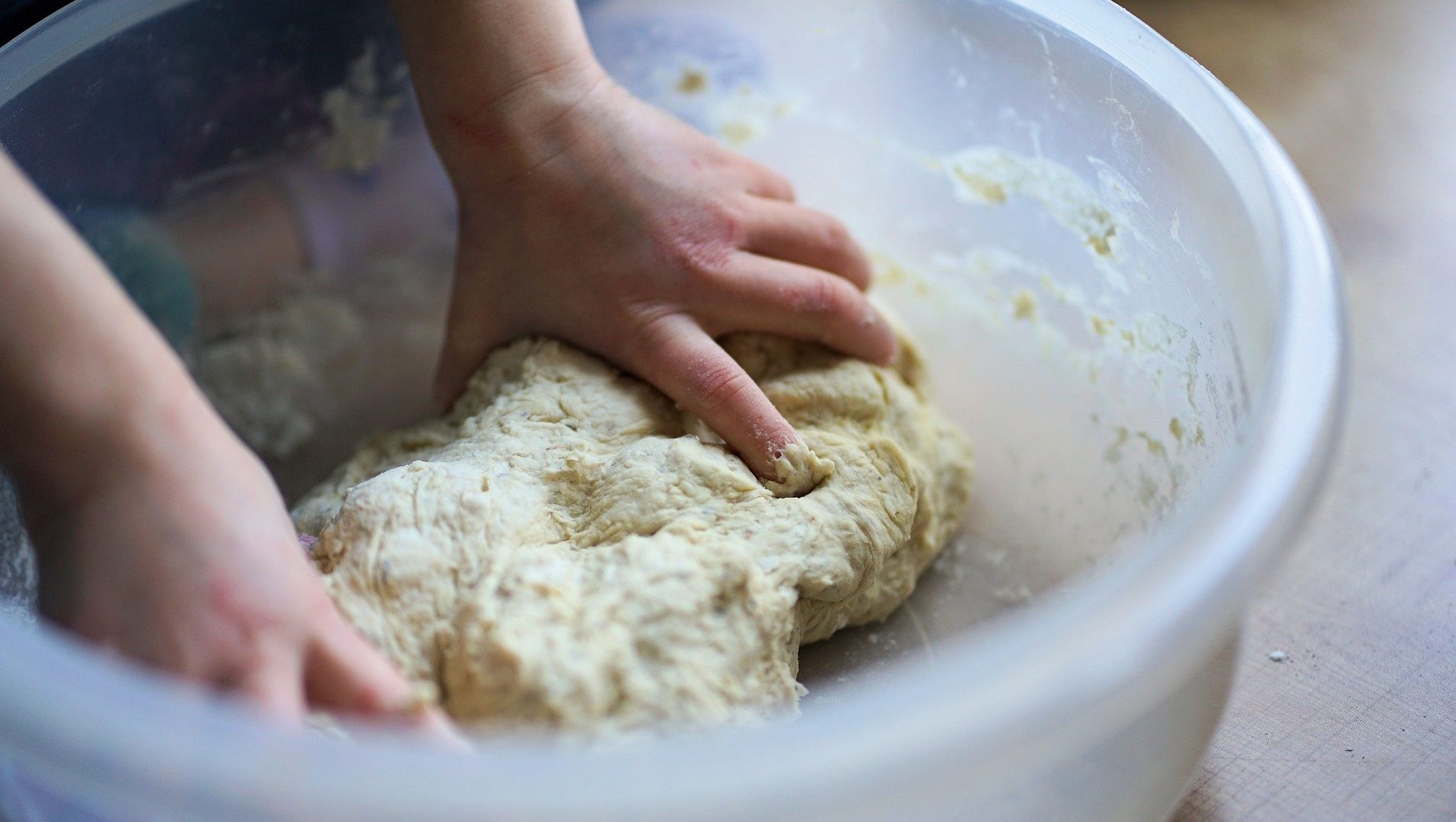Post written by Heidi Furhman, Discovery Camp Coordinator.
Daily Discovery: What’s Up With Yeast?
What is yeast? How does it work? Why is it important for making the breads and treats we all love? Learn about yeast through our video “What’s Up With Yeast” and conduct this experiment to observe yeast at work for yourself!
Supplies:
- Clear Bottle (water bottles work well)
- Warm water
- Package of Yeast
- Sugar
- Balloon
What is Yeast?
Check out our video “What’s Up With Yeast?” to discover the connection between bread and balloons, and explore what yeast is, how it works in bread dough, and what kinds of yeast people have been using for hundreds of years.
As you watch, conduct this experiment along with our educator Heidi!
Instructions:
- Gather your supplies! You’ll need a clear bottle, a balloon, warm water, sugar, and a package of yeast.
- Stretch out your balloon. Try blowing it up a couple of times to loosen it up.
- Add one to two inches of warm water to a clear bottle. Make sure the water is warm to the touch but not hot! If your water is too hot you’ll kill the yeast. A good test is to hold your wrist under the running water. If you can’t stand it the water is too hot! Which purposes does the warm water serve to help the yeast thrive? (Moisture and warmth).
- Add the package of yeast to the bottle. It will work if you use less than the whole package just adjust the sugar in ratio. (Note: A smaller amount of yeast will take longer to blow up the balloon). Mix up the water and yeast.
- Add about 1 Tablespoon of sugar to the yeast and water mixture and stir it around (or about equal parts yeast and sugar). What purpose does the sugar serve to help the yeast thrive? (Food).
- Stretch the balloon over the top of the opening and set in a warm place for about 15-20 minutes.
- Observe what happened? What do you notice about the yeast mixture? Does it look different than when you put it in? What about the balloon has it expanded? What does that tell you about the yeast? What is causing the balloon to expand (carbon dioxide released by the yeast is filling the balloon!)
- You can leave your experiment alone for several hours or days and keep observing! Does your balloon keep expanding? What about the yeast? What happens to it? At some point the yeast will consume all the food and stop releasing carbon dioxide. Your balloon will likely deflate.
- You can try the experiment again! Try adding more yeast and sugar or less yeast and sugar. How does that impact the time it takes for the balloon to inflate? Try using hot water or cold water. What happens then? Is your yeast able to grow? If yes, does it grow faster or slower? If no, why do you think your yeast was unable to grow? (Packaged yeast needs warm water to reactivate since it’s suspended in a forced hibernation state. Too cold, and your yeast will not be reactivated, too hot and you’ll kill it!
Sourdough Starters
You can try making your own sourdough starter at home to observe living yeast! Remember it can take some practice and a whole lot of patience to get it right, but just about anyone can do it! If it doesn’t work the first time try again!
You’ll need flour, water, and a glass jar to get started.
Try this to get you started or google “Sourdough Starter” for many amazing resources and recipes to get you started.
Want to download these directions? Click here for a handy PDF!
Follow along with our Daily Discovery! Click here for all activities that you can do at home.

